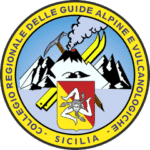The Etna volcano is the most active and highest volcano in Europe, with a history of eruptions that goes back more than half a million years.
It is also a UNESCO World Heritage Site, a natural laboratory for scientific research, and a popular destination for tourists and adventurers. But how do we know what is happening inside and outside this giant mountain of fire? How do we predict its eruptions and protect the people and the environment from its hazards? The answer is: by monitoring and studying it with the help of the INGV, the National Institute of Geophysics and Volcanology.
The INGV is the Italian public research institution that is responsible for the surveillance and the scientific investigation of the Italian volcanoes, including Etna. The INGV has a branch in Catania, the Osservatorio Etneo, that is dedicated to the observation and the analysis of the Etna volcano. The INGV-OE operates a network of instruments and sensors that collect data on the volcanic activity 24/7, such as:
Seismic stations that record the earthquakes and the tremors caused by the movement of magma and gas inside the volcano.
GPS stations that measure the deformation of the ground due to the inflation or the deflation of the magma chamber.
Thermal cameras and infrared sensors that detect the temperature and the intensity of the lava flows and the fountains.
Gas analyzers and spectrometers that measure the composition and the flux of the volcanic gases emitted by the craters and the fumaroles.
Video cameras and webcams that provide real-time images of the summit and the flank eruptions from different viewpoints.
All these data are transmitted to the control room of the INGV-OE, where a team of experts processes and interprets them, using advanced software and models. The INGV-OE also produces daily bulletins and reports on the volcanic activity, as well as alerts and warnings in case of emergency.
The INGV-OE collaborates with other institutions and authorities, such as the Civil Protection, the Regional Government, the local municipalities, the airport, and the media, to ensure the safety and the information of the population and the visitors.
But the INGV-OE does not only monitor the Etna volcano, it also studies it. The INGV-OE conducts scientific research projects on various aspects of the volcano, such as its history, its structure, its dynamics, its chemistry, its ecology, and its impacts.
The INGV-OE also organizes field campaigns and experiments, using drones, helicopters, satellites, and other tools, to collect samples and measurements from the volcano. The INGV-OE publishes the results of its research in scientific journals and books, and participates in national and international conferences and workshops.
The INGV-OE also promotes the dissemination and the education of the volcanic knowledge, through its website, its social media, its publications, and its outreach activities.
The Etna volcano is a complex and fascinating phenomenon that requires constant attention and investigation. The INGV-OE is the institution that provides the scientific and technical support for the understanding and the management of this natural wonder. If you want to learn more about the Etna volcano and the INGV-OE, you can visit their website.
If you want to experience the Etna volcano in person, you can join one of my amazing trekking tours with a professional volcanological Guide, to experience the beauty and the secrets of this majestic mountain.



